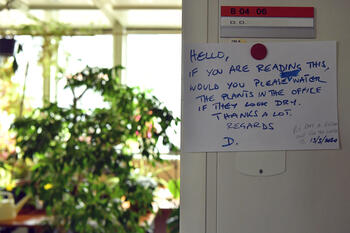
“We shall never deal with the complex problems of large units and differentiated groups unless at the same time we rebuild and revitalize the small unit. We must begin at the beginning; it is here where all life, even in big communities and organizations, starts.”
— Lewis Mumford
What if they reopened the office and nobody came? This scenario is not as far-fetched as many believe. The office may not be dead, but its post-COVID future, particularly in big cities, may look more like a medieval-style arrangement than the buzzing, super dense science fiction vision from The Jetsons.
In the coming months, particularly after Trump likely loses the White House, there will be a massive campaign—already starting from office owners like Related—to force people back into their cubicles. Billions in real estate are at stake for the creator of New York’s Hudson Yards, which received $6 billion in city subsidies and tax breaks. Besides being a hideous monstrosity, the development now could prove itself a giant white elephant. Wall Street financiers, many of whom have invested in ultra-expensive city residential and office properties, also are desperate to get the peasants back tilling the postindustrial fields. With even the iconic Empire State Building losing money hand over fist, some landlords are so panicked that they are offering tenants free rent to lure them back. Meanwhile, in San Francisco some tech firms are canceling their leases.
COVID has been especially severe in cities due to what the demographer Wendell Cox labels “exposure density” brought on by insufficiently ventilated places like crowded housing, subways, elevators, and the office environment. The virus’s fatality rate has been between three and six times higher in dense urban areas than in the suburbs or the countryside. No surprise then that among current remote workers—who tend to be clustered in cities where a higher percentage of occupations can be done remotely—roughly 60%, notes Gallup, want to stay at home or close to home. Even fewer still are likely to want to take public transit, which has been widely linked to high infection and fatality rates in the pandemic.
Going back to pre-COVID work arrangements seems all but impossible. As the Gallup poll shows, most people now working from home want to keep it that way for the foreseeable future. In New York City, barely 10% of workers have returned to offices. While in London companies report 15% have returned. Many companies, including banks and leading tech firms such as Facebook, Salesforce, and Twitter, are expecting a large portion of their workforce to continue to work remotely after the pandemic. The transition has been less jarring for tech companies since dispersed work is now the norm for the vast majority of startups, as a recent survey of venture capitalists shows. Stanford economist Nicholas Bloom projects that ultimately, we will see telecommuting increase from 5% of the workforce before the pandemic to something closer to 20%.
These current trends toward remote work and greater concern about “density exposure” and related risks of urban living contradict many of the bold predictions made over the last quarter century. We are a far cry from a decade ago when developers like Sam Zell were boldly predicting rapid densification, with many people choosing to crowd into micro-units in a process tied to widespread claims about “the end of suburbia.” This was always a gross exaggeration: Throughout the last few decades the suburbs have retained their demographic and economic predominance. As a Harvard study recently confirmed, suburbia has actually been gaining ground over the past 40 years.
Read the rest at Tablet Magazine.
Joel Kotkin is the author of The Coming of Neo-Feudalism: A Warning to the Global Middle Class. He is the Presidential Fellow in Urban Futures at Chapman University and Executive Director for Urban Reform Institute — formerly the Center for Opportunity Urbanism. Learn more at joelkotkin.com and follow him on Twitter @joelkotkin
Photo credit: Dean Calma via Flickr under CC 2.0 License.












